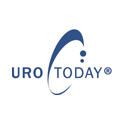Estrogens are known to have a major role in the function of the lower urinary tract although the role of exogenous estrogen replacement therapy in the management of women with lower urinary tract dysfunction remains controversial.
Whilst for many years systemic and vaginal estrogen therapy was felt to be beneficial in the treatment of lower urinary and genital tract symptoms this evidence has recently been challenged by large epidemiological studies investigating the use of systemic hormone replacement therapy. Consequently the role of estrogen in the management of postmenopausal women with Overactive Bladder (OAB) remains uncertain. In addition the evidence base regarding the use of exogenous estrogen therapy has changed significantly over the last decade and has led to a major changes in current clinical practice. The aim of this article is to review the evidence for the role of estrogen therapy in the management of OAB focusing on current knowledge with regard to both systemic and local estrogen therapy as well as investigating the emerging role of combination therapy with antimuscarinic agents.
Written by:
Robinson D, Cardozo L, Milsom I, Pons ME, Kirby M, Koelbl H, Vierhout M. Are you the author?
Department of Urogynaecology, Kings College Hospital, London, United Kingdom.
Reference: Neurourol Urodyn. 2013 Jul 19. Epub ahead of print.
doi: 10.1002/nau.22464
PubMed Abstract
PMID: 23868110
UroToday.com Overactive Bladder (OAB) Section



